Conventional loans, also called conforming loans, are a general term applied to loan products that meet Fannie Mae and Freddie Mac requirements.
These are two government-sponsored organizations that essentially back conforming loans by buying them from originators on the secondary market, thus freeing up the loan originator’s capital to sell more loans.
But not all loans and borrowers meet Fannie Me and Freddie Mac requirements. These loans fall under the non-conforming mortgage category, also called non-QM loans. Commonly accessed non-conforming loans are jumbo loans, which earned their name because they are larger than the maximum loan size allowed for conforming loans.
For borrowers, it’s important to know if you can qualify for a conventional loan as these typically have some of the best interest rates and loan terms available (outside of VA Loans, and USDA loans).
So, what are conventional loan requirements?
Low Down Payments
One of the most significant barriers to getting into the housing market is a down payment. This is especially true if you’re a first-time homebuyer. Conventional loans can be accessed with as little as a 3% down payment, far less than the standard 20% required by other loan products.
If it’s not your first home purchase, or you’re making more than 80% of the median income in your area, then you can get a conventional loan with just a 5% down payment.
Buyers looking to use a conventional loan on a second home will need to have at least a 10% down payment.
While not having a large down payment is great, buyers need to prepare for the additional cost of private mortgage insurance.
Private Mortgage Insurance (PMI)
PMI is a premium charged on loans with less than a 20% down payment. Its purpose is to protect the lender from a loss if the borrower defaults. The cost of PMI varies by loan type, but it is also impacted by the borrower’s credit score and the loan amount.
PMI is usually paid in conjunction with the monthly mortgage payment; however, sometimes, it can also be paid as a lump sum along with the other closing costs.
If a borrower chooses to pay monthly, they will no longer need to make the extra payments once they have 20% equity, according to their amortization schedule.
Alternatively, many buyers choose to refinance once their property has appreciated in value. During hot real estate markets, this can often happen quickly. It’s not abnormal for a borrower to refinance 18 months after purchasing their home to get a better rate or remove their PMI burden.
Loan Amounts
There are restrictions on the loan amount for conventional loans. These restrictions vary county by county and can change with each year. As of now, less expensive counties have a maximum loan amount of $484,350, while more expensive counties have a maximum of $726,525.
Credit Scores
Because conventional loans are meant to be accessible to as many people as possible, the credit score requirements are not high. However, to access these loan products, borrowers do need to have a minimum credit score of 620.
If you think that a conventional loan is the right product for you or want to get more information about alternatives, reach out to a member of our team.




